#edward iv of england
Text









THE WHITE QUEEN 10 YEAR ANNIVERSARY WEEK | Day 1 (August 14): Favorite Episode → 1.01 In Love With the King
You are a girl from the house of Lancaster, and you live in a country that is divided. You may not fall in love with a York king, unless there is some profit in it for you. Your life will not be easy because you wish it to be so. You will have to wade through blood and you will know loss, you must be stronger.
#the white queen#twqedit#perioddramaedit#twq10#elizabeth woodville#edward iv of england#jacquetta of luxembourg#S1E01 In Love With the King#my edits
315 notes
·
View notes
Photo






Max Irons as Edward IV of England · The White Queen 1.01
#the white queen#twqedit#thewhitequeenedit#max irons#edward iv#edward iv of england#perioddramaedit#weloveperioddrama#perioddramasource#malecharacters#mine#eivtwq
841 notes
·
View notes
Text



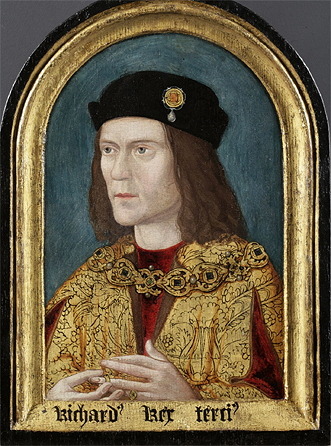
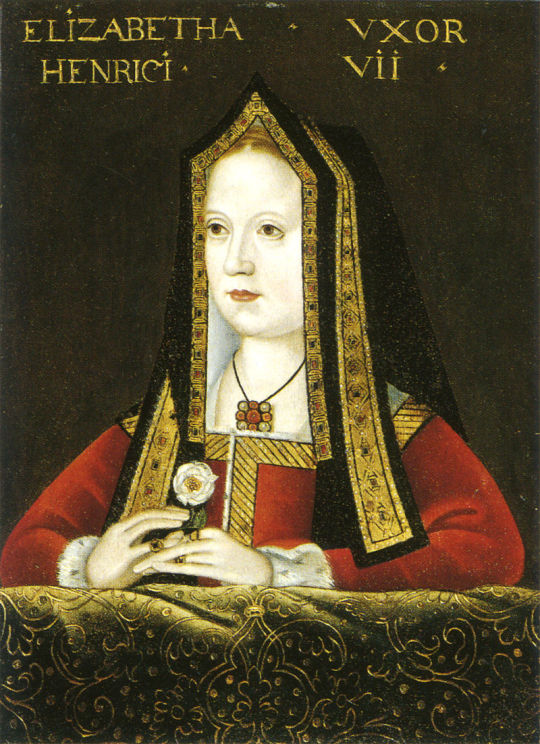



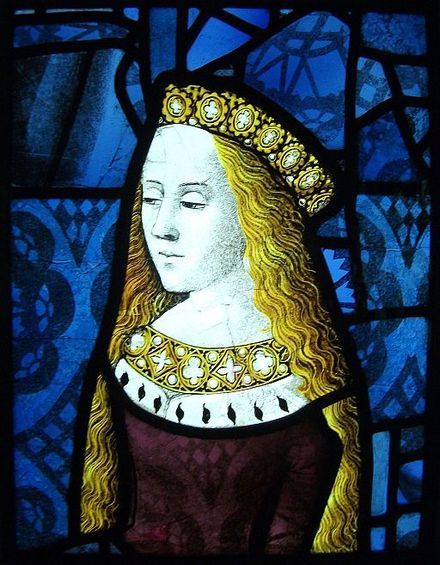
The Bastard Kings and their families - Edward V of England @asoiafcanonjonsnow
This is series of posts are complementary to this historical parallels post from the JON SNOW FORTNIGHT EVENT, and it's purpouse to discover the lives of medieval bastard kings, and the following posts are meant to collect portraits of those kings and their close relatives.
In many cases it's difficult to find contemporary art of their period, so some of the portrayals are subsequent.
1) Edward V of England (1470 –1483), son of Edward IV of England and his wife Elizabeth Woodville
2) Edward IV of England (1442 – 1483), son of Richard of York and his wife Cecily Neville
3) Elizabeth Woodville (1437–1492), daughter of Richard Woodville and his wife Jacquetta of Luxemburg
4) Richard III of England (1452 - 1485), son of Richard of York and his wife Cecily Neville
5) Elizabeth of York ( 1466 – 1503), daughter of Edward IV of England and his wife Elizabeth Woodville
6) Henry VII of England (1457 – 1509), son of Edmund Tudor and his wife Margaret Beaufort
7) Catherine of York ( 1479 – 1527), daughter of Edward IV of England and his wife Elizabeth Woodville
8) Bridget of York ( 1480 –c. 1507), daughter of Edward IV of England and his wife Elizabeth Woodville
9) Cecily of York (1469 -1507), daughter of Edward IV of England and his wife Elizabeth Woodville
#jonsnowfortnightevent2023#day 10#echoes from the past#medieval bastard kings#bastard kings and their families#jon snow#asoiaf#a song of ice and fire#edward v of england#edward iv of england#elizabeth woodville#richard iii of england#elizabeth of york#henry vii of england#catherine of york#bridget of york#cecily of york
17 notes
·
View notes
Text

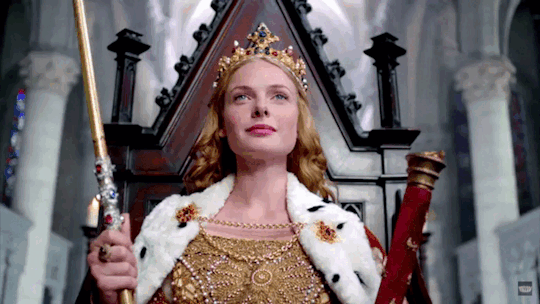
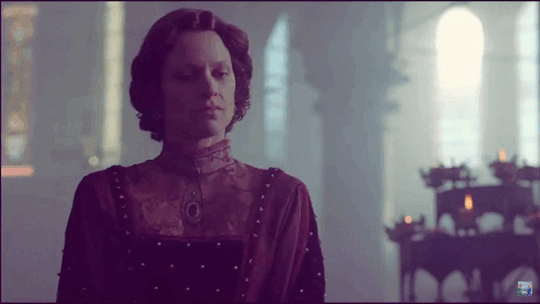
𝘾𝙀𝙍𝙎𝙀𝙄 𝙇𝘼𝙉𝙉𝙄𝙎𝙏𝙀𝙍 & 𝙀𝙇𝙄𝙕𝘼𝘽𝙀𝙏𝙃 𝙒𝙊𝙊𝘿𝙑𝙄𝙇𝙇𝙀/ 𝙈𝘼𝙍𝙂𝘼𝙍𝙀𝙏 𝙊𝙁 𝘼𝙉𝙅𝙊𝙐
ᴀꜱᴏɪᴀꜰ ᴄʜᴀʀᴀᴄᴛᴇʀꜱ ᴀɴᴅ ᴛʜᴇɪʀ ᴡᴀʀ ᴏꜰ ᴛʜᴇ ʀᴏꜱᴇꜱ ᴄᴏᴜɴᴛᴇʀᴘᴀʀᴛꜱ 𝐏𝐀𝐑𝐓 𝟏/?
𝙲𝙴𝚁𝚂𝙴𝙸 𝙻𝙰𝙽𝙽𝙸𝚂𝚃𝙴𝚁 & 𝙴𝙻𝙸𝚉𝙰𝙱𝙴𝚃𝙷 𝚆𝙾𝙾𝙳𝚅𝙸𝙻𝙻𝙴
Known for their beauty (blonde hair, fair skin, enthrancing eyes)
Queen consort to a king who won his throne in battle (Robert/Edward IV).
Favoured the presence of their family at court and their increasing power.
Close to their brothers (Cersei waaay more than Elizabeth but you know).
Loathed but many people, even at court.
Their husbands were drunks and unfaithful to them.
Their children were declared (or accused of) being bastards.
Said to be cold and power seekers.
𝙲𝙴𝚁𝚂𝙴𝙸 𝙻𝙰𝙽𝙽𝙸𝚂𝚃𝙴𝚁 & MARGARET OF ANJOU
Known for their shrewd political mind.
Wives to incompetent kings in an arranged marriage.
Cersei's children and Margaret's son were said to be bastards fruit of adultery.
Their sons (Joffrey/Edward) were (or were rumored to be) psychopaths.
Had those who questioned their children's claim killed and put their heads on a spike.
Started a war in defense of their children's claims.
Reputation of being ambituous and ruthless
Were willing to marry their sons to the daughters of old foes (Warwick, Tyrell)
Their sons died before them.
Their allegiance was to House Lannister/Lancaster.
#cersei lannister#elizabeth woodville#margaret of anjou#game of thrones#a song of ice and fire#george rr martin#the white queen#lena headey#robert baratheon#henry vi of england#edward iv of england#war of the roses#the war of the roses#the hollow crown#house lannister#jaime lannister#house lancaster#joffrey baratheon#edward of westminster
32 notes
·
View notes
Text
Oh, those Yorkist boyz...😆

#craiyon#ai generated#unreality#tw unreality#edward iv#edward iv of england#richard iii#king richard iii#but where is George#ai doesn't pick up a certain Duke of Clarence yet
5 notes
·
View notes
Text

Something I had done years ago on A4 size paper. I think I skipped a few due to lack of space. Kings and Queens of England (after king Henry IV)
#kings of england#artists on tumblr#drawing#traditional art#traditional drawing#Richard III#Henry VII#Henry VIII#Mary I#Elizabeth I#Charles I#Charles II#George III#George IV#Queen Victoria#George v#George VI#Edward VII#queen elizabeth ii#history art
695 notes
·
View notes
Text
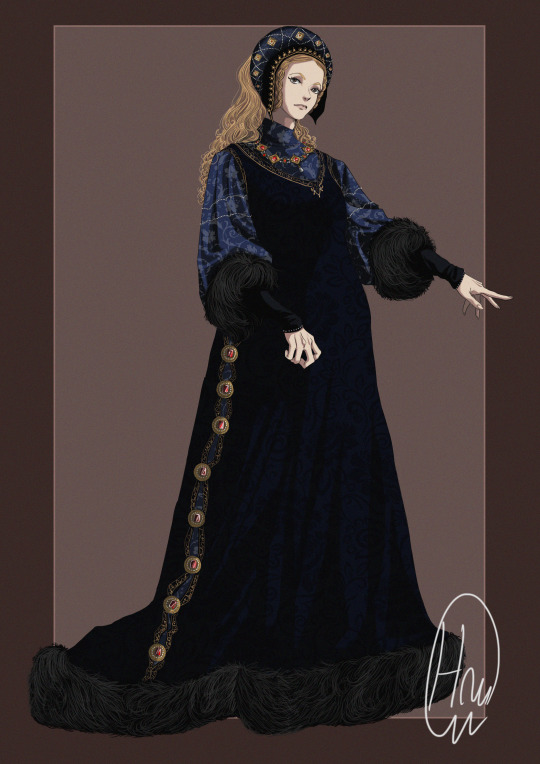
Elizabeth of York, fashion character design. Mourning outfit, c. 1482.
#the wars of the roses#15th century#medieval#middle ages#historical#british history#medieval england#art#illustration#sketch#edward iv#elizabeth woodville#elizabeth of york#henry vii#henry vi#margaret of anjou#margaret beaufort#isabel neville#richard iii#the white queen#the white princess#medieval fashion#historical fashion#character design#artists on tumblr#medieval costume#royals#house of york#plantagenets
225 notes
·
View notes
Text
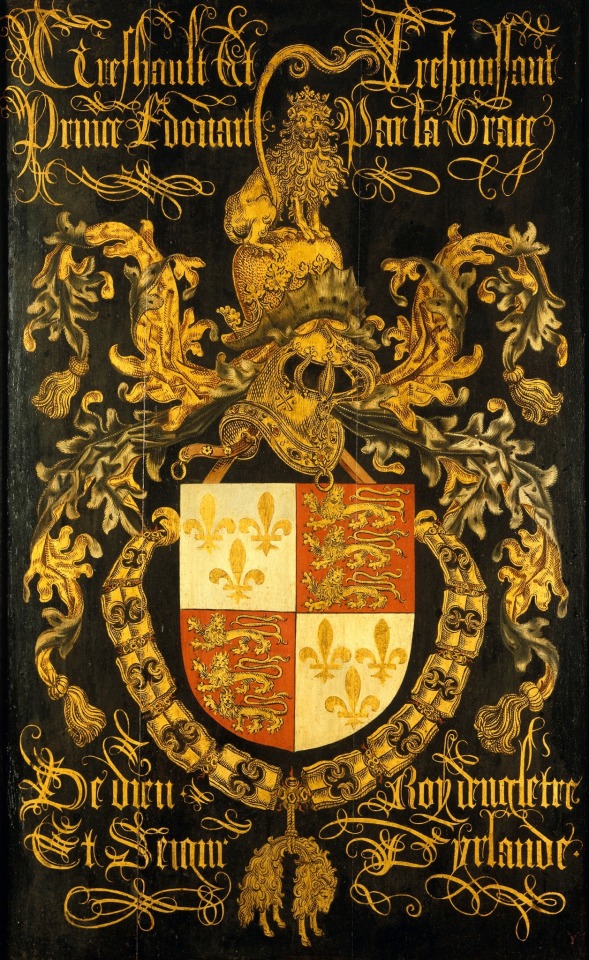
Coat of Arms of Edward IV, King of England, in his Capacity as Knight of the Order of the Golden Fleece
by Pierre Coustain, c. 1481
#edward iv#king#england#english#coat of arms#heraldry#heraldic#pierre coustain#art#medieval#mediaeval#middle ages#chivalry#order of the golden fleece#shield#history#knights#knight#helmet#europe#european#burgundy#netherlands#bruges#heraldic art
206 notes
·
View notes
Photo








↳ richard iii of england + alphabet
#richard iii#aneurin barnard#the white queen#house york#house plantagenet#history#english history#twq#richard iii of england#anne neville#cecily of york#edward iv#george plantagenet#elizabeth woodville#richard of york#henry vii#margaret of york#john de la pole#historyedit#twqedits*#alphabet*#my gifs#creations*
371 notes
·
View notes
Note
What do you feel about the house of york
I feel like it's a medieval dynasty that one a war. That's about it.
I also think that Richard Duke of York was nothing more than a jealous cousin that saw the perfect opportunity to climb the ladder and took it, justly paying the price. Edward IV's anger over his and his brother's death is understandable and so were his actions. Too bad that he didn't saw that the Duke of York's ruthless ambitions had trickled down to his sons Richard and George before they tried it with him. I think the Woodvilles were overtly greedy and took too much of the hand that fed them making the nobility hate them, and they also paid for it. I mean, arranging prestige marriages for every single Woodville? I get it, one of them was the Queen, but come on now, they clearly overplayed.
On the whole, I find this representation of the Yorks as this typical Good HeirsTM that took their rightful place on the throne and stepped up through harsh times that persists so much to this day lame and reductive. The truth of the matter is, they were never more just and GoodTM than the Lancasters. The Lancasters successfully organized a coup and sat the throne, the Yorks did the same, demonizing Henry VI and Queen Margaret of Anjou through propaganda as a freak and an overly ambitious femme fatale respectively, while casting their teenage son as a cruel bastard. All for defending fiercely what was by right theirs (we have Shakespeare to blame for that as well).
#wars of the roses#house york#house lancaster#edward iv#richard duke of york#george plantagenet#richard iii#Henry vi#margaret of anjou#edward of westminster#medieval warfare#medieval england#late middle ages
26 notes
·
View notes
Text
Elizabeth of York being that iconic that every man who ever met her immediately fell in love with her, she was the darling of her father Edward IV’s eye, had her Uncle Richard III wrapped around her finger and then married her families enemy Henry VII in an arranged marriage but managed to get him to fall head over heals for her. To the point where he was on the short list of Kings in history who never took a mistress, remained loyal to her and is documented as being so depressed and suicidal after her death that he was never the same, and then her son who even though he became such a horrendous man he spent his entire life trying to replace his mother with every woman he met.
26 notes
·
View notes
Photo






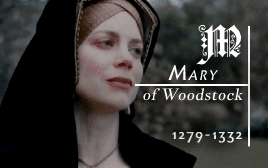
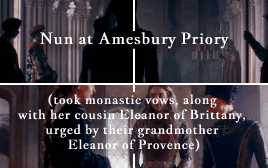


♛ Daughters of Edward I and Eleanor of Castile
⤷ and some of their famous descendants
#historyedit#eleanor of england#joan of acre#margaret of england#mary of woodstock#elizabeth of rhuddlan#edward i#eleanor of castile#edward iv#richard iii#katherine parr#anne boleyn#henry v#mary queen of scots#perioddramaedit#gifshistorical#perioddramasource#women in history#history#my edit
416 notes
·
View notes
Text
In the tumultuous world of medieval England, Edward IV was a king who fought tooth and nail to secure his place on the throne amidst a sea of betrayal and bloodshed. His rise to power during the Wars of the Roses shaped the destiny of a nation.
9 notes
·
View notes
Text
Si vous aimez l'Histoire n'hésitez pas à consulter mes petits morceaux de la petite histoire.
Suivez les aventures de Baudouin IV de Jérusalem, de Bohémond de Tarente, d'Édouard Ier d'Angleterre et des autres souverains et souveraines de France, d'Angleterre, de Terre Sainte et de Navarre.

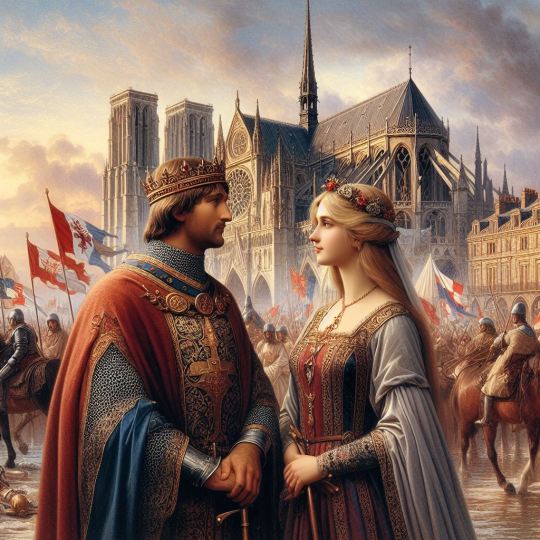
#history medieval#medieval history#medieval#england#france#holy land#king baldwin#baldwin iv#baudouin iv#Bohemond of Tarento#Bohemond I of Antioch#Edward I#Edouard I#histoire#historical
11 notes
·
View notes
Text
Queen Margaret (of Anjou) had written to the Common Council in November when the news of the Duke of York's coup was proclaimed. The letter from the queen was published in modernised English by M.A.E. Wood in 1846, and she dated it to February 1461 because of its opening sentence: ‘And whereas the late Duke of N [York]...." However the rest of the letter, and that of the prince, is in the present tense and clearly indicates that the Duke of York is still alive. The reference to the ‘late duke’ is not to his demise but to the attainder of 1459 when he was stripped of his titles as well as of his lands. If the queen’s letter dates to November 1460, and not February 1461, it make perfect sense. Margaret declared the Duke of York had ‘upon an untrue pretense, feigned a title to my lord’s crown’ and in so doing had broken his oath of fealty. She thanked the Londoners for their loyalty in rejecting his claim. She knew of the rumours,
that we and my lords sayd sone and owrs shuld newly drawe toward yow with an vnsome [uncounted] powere of strangars, disposed to robbe and to dispoyle yow of yowr goods and havours, we will that ye knowe for certeyne that . . . . [y]e, nor none of yow, shalbe robbed, dispoyled nor wronged by any parson that at that tyme we or owr sayd sone shalbe accompanied with
She entrusted the king's person to the care of the citizens ‘so that thrwghe malice of his sayde enemye he be no more trowbled vexed ne jeoparded.’ In other words the queen was well informed in November 1460 of the propaganda in London concerning the threat posed by a Lancastrian military challenge to the illegal Yorkist proceedings. Margaret assured the Common Council that no harm would come to the citizenry or to their property. Because the letter was initially misdated, it has been assumed that the queen wrote it after she realised the harm her marauding troops were doing to her cause, and to lull London into a false sense of security. This is not the case, and it is a typical example of historians accepting without question Margaret’s character as depicted in Yorkist propaganda. Margaret’s letter was a true statement of her intentions but it made no impact at the time and has made none since. How many people heard of it? The Yorkist council under the Earl of Warwick, in collusion with the Common Council of the city, was in an ideal position to suppress any wide dissemination of the letter, or of its content.
... When Margaret joined the Lancastrian lords it is unlikely that she had Scottish troops with her. It is possible that Jasper Tudor, Earl of Pembroke, sent men from Wales but there was no compelling reason why he should, he needed all the forces at his disposal to face Edward Earl of March, now Duke of York following his father’s death at Wakefield, who, in fact, defeated Pembroke at Mortimer’s Cross on 2 February just as the Lancastrian army was marching south. The oft repeated statement that the Lancastrian army was composed of a motley array of Scots, Welsh, other foreigners (French by implication, for it had not been forgotten that René of Anjou, Queen Margaret’s father, had served with the French forces in Nomandy when the English were expelled from the duchy, nor that King Charles VII was her uncle) as well as northern men is based on a single chronicle, the Brief Notes written mainly in Latin in the monastery of Ely, and ending in 1470. It is a compilation of gossip and rumour, some of it wildly inaccurate, but including information not found in any other contemporary source, which accounts for the credence accorded to it. The Dukes of Somerset and Exeter and the Earl of Devon brought men from the south and west. The Earl of Northumberland was not solely reliant on his northern estates; as Lord Poynings he had extensive holdings in the south. The northerners were tenants and retainers of Northumberland, Clifford, Dacre, the Westmorland Nevilles, and Fitzhugh, and accustomed to the discipline of border defence. The continuator of Gregory’s Chronicle, probably our best witness, is emphatic that the second battle of St Albans was won by the ‘howseholde men and feyd men.” Camp followers and auxiliaries of undesirables there undoubtedly were, as there are on the fringes of any army, but the motley rabble the queen is supposed to have loosed on peaceful England owes more to the imagination of Yorkist propagandists than to the actual composition of the Lancastrian army.
... Two differing accounts of the Lancastrian march on London are generally accepted. One is that a large army, moving down the Great North Road, was made up of such disparate and unruly elements that the queen and her commanders were powerless to control it.” Alternatively, Queen Margaret did not wish to curb her army, but encouraged it to ravage all lands south of the Trent, either from sheet spite or because it was the only way she could pay her troops.” Many epithets have been applied to the queen, few of them complimentary, but no one has as yet called her stupid. It would have been an act of crass stupidity wilfully to encourage her forces to loot the very land she was trying to restore to an acceptance of Lancastrian rule, with her son as heir to the throne. On reaching St Albans, so the story goes, the Lancastrian army suddenly became a disciplined force which, by a series of complicated manoeuvres, including a night march and a flank attack, won the second battle of St Albans, even though the Yorkists were commanded by the redoubtable Earl of Warwick. The explanation offered is that the rabble element, loaded down with plunder, had descended before the battle and only the household men remained. Then the rabble reappeared, and London was threatened. To avert a sack of the city the queen decided to withdraw the army, either on her own initiative or urged by the peace-loving King Henry; as it departed it pillaged the Abbey of St Albans, with the king and queen in residence, and retired north, plundering as it went. Nevertheless, it was sufficiently intact a month later to meet and nearly defeat the Yorkist forces at Towton, the bloodiest and hardest fought battle of the civil war thus far. The ‘facts’ as stated make little sense, because they are seen through the distorting glass of Yorkist propaganda.
The ravages allegedly committed by the Lancastrian army are extensively documented in the chronicles, written after the event and under a Yorkist king. They are strong on rhetoric but short on detail. The two accounts most often quoted are by the Croyland Chronicle and Abbott Whethamstede. There is no doubting the note of genuine hysterical fear in both. The inhabitants of the abbey of Crowland were thoroughly frightened by what they believed would happen as the Lancastrians swept south. ‘What do you suppose must have been our fears . . . [w]hen every day rumours of this sad nature were reaching our ears.’ Especially alarming was the threat to church property. The northern men ‘irreverently rushed, in their unbridled and frantic rage into churches . . . [a]nd most nefariously plundered them.’ If anyone resisted ‘they cruelly slaughtered them in the very churches or churchyards.’ People sought shelter for themselves and their goods in the abbey,“ but there is not a single report of refugees seeking succour in the wake of the passage of the army after their homes had been burned and their possessions stolen. The Lancastrians were looting, according to the Crowland Chronicle, on a front thirty miles wide ‘like so many locusts.“ Why, then, did they come within six miles but bypass Crowland? The account as a whole makes it obvious that it was written considerably later than the events it so graphically describes.
The claim that Stamford was subject to a sack from which it did not recover is based on the Tudor antiquary John Leland. His attribution of the damage is speculation; by the time he wrote stories of Lancastrian ravages were well established, but outside living memory. His statement was embellished by the romantic historian Francis Peck in the early eighteenth century. Peck gives a spirited account of Wakefield and the Lancastrian march, influenced by Tudor as well as Yorkist historiography.
… As late as 12 February when Warwick moved his troops to St Albans it is claimed that he did not know the whereabouts of the Lancastrians, an odd lack of military intelligence about an army that was supposed to be leaving havoc in its wake. The Lancastrians apparently swerved to the west after passing Royston which has puzzled military historians because they accept that it came down the Great North Road, but on the evidence we have it is impossible to affirm this. If it came from York via Grantham, Leicester, Market Harborough, Northampton and Stony Stratford to Dunstable, where the first engagement took place, there was no necessity to make an inexplicable swerve westwards because its line of march brought it to Dunstable and then to St Albans. The Lancastrians defeated Warwick’s army on 17 February 1461 and Warwick fled the field. In an echo of Wakefield there is a suggestion of treachery. An English Chronicle tells the story of one Thomas Lovelace, a captain of Kent in the Yorkist ranks, who also appears in Waurin. Lovelace, it is claimed, was captured at Wakefield and promised Queen Margaret that he would join Warwick and then betray and desert him, in return for his freedom.
Lt. Colonel Bume, in a rare spirit of chivalry, credits Margaret with the tactical plan that won the victory, although only because it was so unorthodox that it must have been devised by a woman. But there is no evidence that Margaret had any military flair, let alone experience. A more likely candidate is the veteran captain Andrew Trolloppe who served with Warwick when the latter was Captain of Calais, but he refused to fight under the Yorkist banner against his king at Ludford in 1459 when Warwick brought over a contingent of Calais men to defy King Henry in the field. It was Trolloppe’s ‘desertion’ at Ludford, it is claimed, that forced the Yorkists to flee. The most objective and detailed account of the battle of St Albans is by the unknown continuator of Gregory’s Chronicle. The chronicle ends in 1469 and by that time it was safe to criticise Warwick, who was then out of favour. The continuator was a London citizen who may have fought in the Yorkist ranks. He had an interest in military matters and recorded the gathering of the Lancastrian army at Hull, before Wakefield, and the detail that the troops wore the Prince of Wales’ colours and ostrich feathers on their livery together with the insignia of their lords. He had heard the rumours of a large ill-disciplined army, but because he saw only the household men he concluded that the northerners ran away before the battle. Abbot Whethamstede wrote a longer though far less circumstantial account, in which he carefully made no mention of the Earl of Warwick.
… Margaret of Anjou had won the battle but she proceeded to lose the war. London lay open to her and she made a fatal political blunder in retreating from St Albans instead of taking possession of the capital.' Although mistaken, her reasons for doing so were cogent. The focus of contemporary accounts is the threat to London from the Lancastrian army. This is repeated in all the standard histories, and even those who credit Margaret with deliberately turning away from London do so for the wrong reasons.
... The uncertainties and delays, as well as the hostility of some citizens, served to reinforce Margaret’s belief that entry to London could be dangerous. It was not what London had to fear from her but what she had to fear from London that made her hesitate. Had she made a show of riding in state into the city with her husband and son in a colourful procession she might have accomplished a Lancastrian restoration, but Margaret had never courted popularity with the Londoners, as Warwick had, and she had kept the court away from the capital for several years in the late 1450s, a move that was naturally resented. Warwick’s propaganda had tarnished her image, associating her irrevocably with the dreaded northern men. There was also the danger that if Warwick and Edward of March reached London with a substantial force she could be trapped inside a hostile city, and she cannot have doubted that once she and Prince Edward were taken prisoner the Lancastrian dynasty would come to an end. Understandably, at the critical moment, Margaret lost her nerve.
... Queen Margaret did not march south in 1461 in order to take possession of London, but to recover the person of the king. She underestimated the importance of the capital to her cause." Although she had attempted to establish the court away from London, the Yorkist lords did not oppose her for taking the government out of the capital, but for excluding them from participation in it. Nevertheless London became the natural and lucrative base for the Yorkists, of which they took full advantage. The author of the Annales was in no doubt that it was Margaret’s failure to enter London that ensured the doom of the Lancastrian dynasty. A view shared, of course, by the continuator of Gregory’s Chronicle, a devoted Londoner:
He that had Londyn for sake
Wolde no more to hem take
The king, queen and prince had been in residence at the Abbey of St Albans since the Lancastrian victory. Abbot Whethamstede, at his most obscure, conveys a strong impression that St Albans was devastated because the Lancastrian leaders, including Queen Margaret, encouraged plundering south of the Trent in lieu of wages. There must have been some pillaging by an army which had been kept in a state of uncertainty for a week, but whether it was as widespread or as devastating as the good abbot, and later chroniclers, assert is by no means certain. Whethamstede is so admirably obtuse that his rhetoric confuses both the chronology and the facts. So convoluted and uncircumstantial is his account that the eighteenth century historian of the abbey, the Reverend Peter Newcome, was trapped into saying: ‘These followers of the Earl of March were looked on as monsters in barbarity.’ He is echoed by Antonia Gransden who has ‘the conflict between the southemers of Henry’s army and the nonherners of Edward’s. The abbey was not pillaged, but Whethamstede blackened Queen Margaret’s reputation by a vague accusation that she appropriated one of the abbey’s valuable possessions before leaving for the north. This is quite likely, not in a spirit of plunder or avarice, but as a contribution to the Lancastrian war effort, just as she had extorted, or so he later claimed, a loan from the prior of Durham earlier in the year. The majority of the chroniclers content themselves with the laconic statement that the queen and her army withdrew to the north, they are more concerned to record in rapturous detail the reception of Edward IV by ‘his’ people. An English Chronicle, hostile to the last, reports that the Lancastrian army plundered its way north as remorselessly as it had on its journey south. One can only assume that it took a different route.
The Lancastrian march ended where it began, in the city of York. Edward of March had himself proclaimed King Edward IV in the capital the queen had abandoned, and advanced north to win the battle of Towton on 29 March. The bid to unseat the government of the Yorkist lords had failed, and that failure brought a new dynasty into being. The Duke of York was dead, but his son was King of England whilst King Henry, Queen Margaret and Prince Edward sought shelter at the Scottish court. The Lancastrian march on London had vindicated its stated purpose, to recover the person of the king so that the crown would not continue to be a pawn in the hands of rebels and traitors, but ultimately it had failed because the Lancastrian leaders, including Queen Margaret, simply did not envisage that Edward of March would have the courage or the capacity to declare himself king. Edward IV had all the attributes that King Henry (and Queen Margaret) lacked: he was young, ruthless, charming, and the best general of his day; and in the end he out-thought as well as out-manoeuvred them.
It cannot be argued that no damage was done by the Lancastrian army. It was mid-winter, when supplies of any kind would have been short, so pillaging, petty theft, and unpaid foraging were inevitable. It kept the field for over a month and, and, as it stayed longest at Dunstable and in the environs of St Albans, both towns suffered from its presence. But the army did not indulge in systematic devastation of the countryside, either on its own account or at the behest of the queen. Nor did it contain contingents of England’s enemies, the Scots and the French, as claimed by Yorkist propaganda. Other armies were on the march that winter: a large Yorkist force moved from London to Towton and back again. There are no records of damage done by it, but equally, it cannot be claimed that there was none.
-B.M Cron, "Margaret of Anjou and the Lancastrian March on London, 1461"
#*The best propaganda narratives always contain an element of truth but it's important to remember that it's never the WHOLE truth#margaret of anjou#15th century#english history#my post#(please ignore my rambling tags below lmao)#imo the bottom line is: they were fighting a war and war is a scourge that is inevitably complicated and messy and unfortunate#arguing that NOTHING happened (on either side but especially the Lancastrians considering they were cut off from London's supplies)#is not a sustainable claim. However: Yorkist propaganda was blatantly propaganda and I wish that it's recognized more than it currently is#also I had *no idea* that her letter seems to have been actually written in 1460! I wish that was discussed more#& I wish Cron's speculation that Margaret may have feared being trapped in a hostile city with an approaching army was discussed more too#tho I don't 100% agree with article's concluding paragraph. 'Edward IV did not ultimately save England from further civil war' he...did???#the Yorkist-Lancastrian civil war that began in the 1450s ended in 1471 and his 12-year reign after that was by and large peaceful#(tho Cron may he talking about the period in between 61-71? but the civil war was still ongoing; the Lancasters were still at large#and the opposing king and prince were still alive. Edward by himself can hardly be blamed for the civil war continuing lol)#but in any case after 1471 the war WAS believed to have ended for good and he WAS believed to have established a new dynasty#the conflict of 1483 was really not connected to the events of the 1450s-1471. it was an entirely new thing altogether#obviously he shouldn't be viewed as the grand undoubted rightful savior of England the way Yorkist propaganda sought to portray him#(and this goes for ALL other monarchs in English history and history in general) but I don't want to diminish his achievements either#However I definitely agree that the prevalent idea that the Lancasters wouldn't have been able to restore royal authority if they'd won#is very strange. its an alternate future that we can't possibly know the answer to so it's frustrating that people seem to assume the worst#I guess the reasons are probably 1) the Lancasters ultimately lost and it's the winners who write history#(the Ricardians are somehow the exception but they're evidently interested in romantic revisionism rather than actual history so 🤷🏻♀️)#and 2) their complicated former reign even before 1454. Ig put together I can see where the skepticism comes from tho I don't really agree#but then again the Yorkists themselves played a huge role in the chaos of the 1450s. if a faction like that was finally out of the way#(which they WOULD be if the Lancasters won in 1461) the Lancastrian dynasty would have been firmly restored and#Henry and Margaret would've probably had more space and time to restore royal authority without direct rival challenges#I'd argue that the Lancasters stood a significantly better chance at restoring & securing their dynasty if they won here rather than 1471#also once again: the analyses written on Margaret's queenship; her role in the WotR; and the propaganda against her are all phenomenal#and far far superior than the analyses on any other historical woman of that time - so props to her absolutely fantastic historians
19 notes
·
View notes
Text
Here is what CLIP-Interrogator, had to say about King Edward IV of England! 😂

"a painting of a man wearing a black hat, by Hans Holbein the Younger, pre-raphaelitism, wearing a general\'s uniform, portrait of jughead jones, bob haircut, around 1 9 years old, crown made of felt, tobey maguire, government archive photograph, fig.1, wearing shiny breastplate"
#clip interrogator#ai generated#ai generated text#edward iv of england#jughead jones???!!! 😂😭💀#try this site y'all#edward iv
0 notes